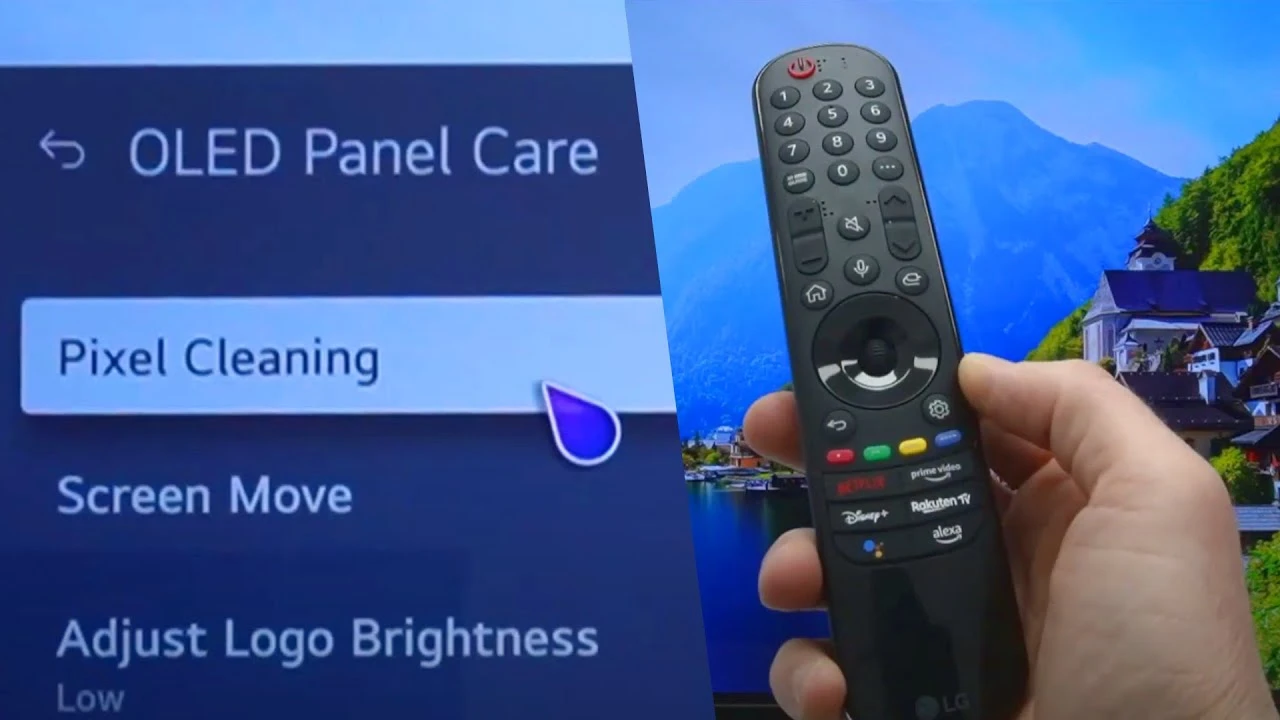Do you ever wonder what the pixel cleaning or pixel refresh option is on your fancy new OLED TV or monitor? Sadly, it doesn't Windex your screen for you, despite the name, but it could be the most important feature your display has, as it's crucial for mitigating a serious problem that's intrinsic to OLEDs.
Even if you're not an expert on displays, there's a good chance you've heard of burn-in, where ghostly visual artifacts stay on your screen if you've displayed a static image for too long. But here's the thing: burning is actually kind of a misnomer. It's not like something is literally burning after images into your screen. A better name for this phenomenon is image retention, and there are two types of image retention that pixel cleaning is supposed to help prevent.
The first is a more temporary issue. After leaving your display on for hours or even minutes, the little transistors that drive the pixels end up reacting differently to the same input voltage. As a result, some pixels don't light up as evenly as they should, resulting in image retention. The good news is that this typically isn't too hard for modern OLED displays to correct. After a few hours of use, many displays will run a shorter pixel cleaning or compensation cycle that lasts a matter of minutes once you turn them off. What it's actually doing is adjusting how much current goes through the transistors so that they'll emit the proper amount of light the next time the TV is turned on.
It's important to note that this temporary retention can also be a side effect of your display heating up from normal use. If this is the case with your TV, you can usually resolve it just by turning it off for a little bit and letting it cool down.
However, there's a more potentially catastrophic kind of image retention that your OLED has to deal with in a different way. This type is a result of the chemicals in the organic LEDs themselves degrading over time. This natural wear and tear is irreversible and doesn't happen evenly. Instead, which pixels degrade faster depends on exactly what is being shown on the screen. This is why static images can visibly damage your display if they're left up too long and too often.
Pixel cleaning cycles focused on permanent retention try to make up for uneven wear rather than truly restoring the pixels to their original state. This kind of compensation cycle takes a longer amount of time, sometimes an hour or more, and works by measuring how much each pixel has degraded so that the TV can drive it harder accordingly the next time you turn it on.
The more a pixel has worn down, the more current it needs to reach its proper brightness. Typically, TVs won't do this until they've been used for quite a while, such as a couple of thousand hours. However, displays differ as to what they'll call their short and long pixel cleaning features, so be sure to check your product's on-screen instructions or user manual to figure out which is which.
If you have a display that allows you to run a refresh cycle manually, don't run the longer refresh too often, as you don't want to start driving your pixels harder unless you have to. Plenty of modern displays are smart enough to do this automatically at the correct intervals once the display is turned off. Our advice is to only manually run the long compensation cycle if you can visibly see there's a problem.
And of course, it helps if you don't watch cable news for more reasons than one. But I have to thank you for watching this whole video. If you liked it, hit the like button; if you disliked it, hit the dislike button. Check out our other videos, comment below with video suggestions, and don't forget to subscribe and follow, depending on how you're feeling—you know that's important.


No comments yet